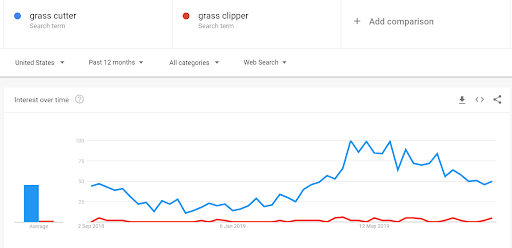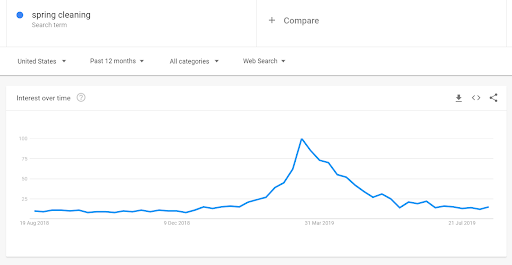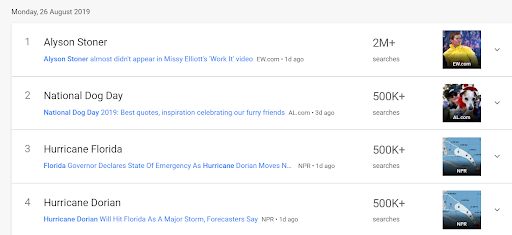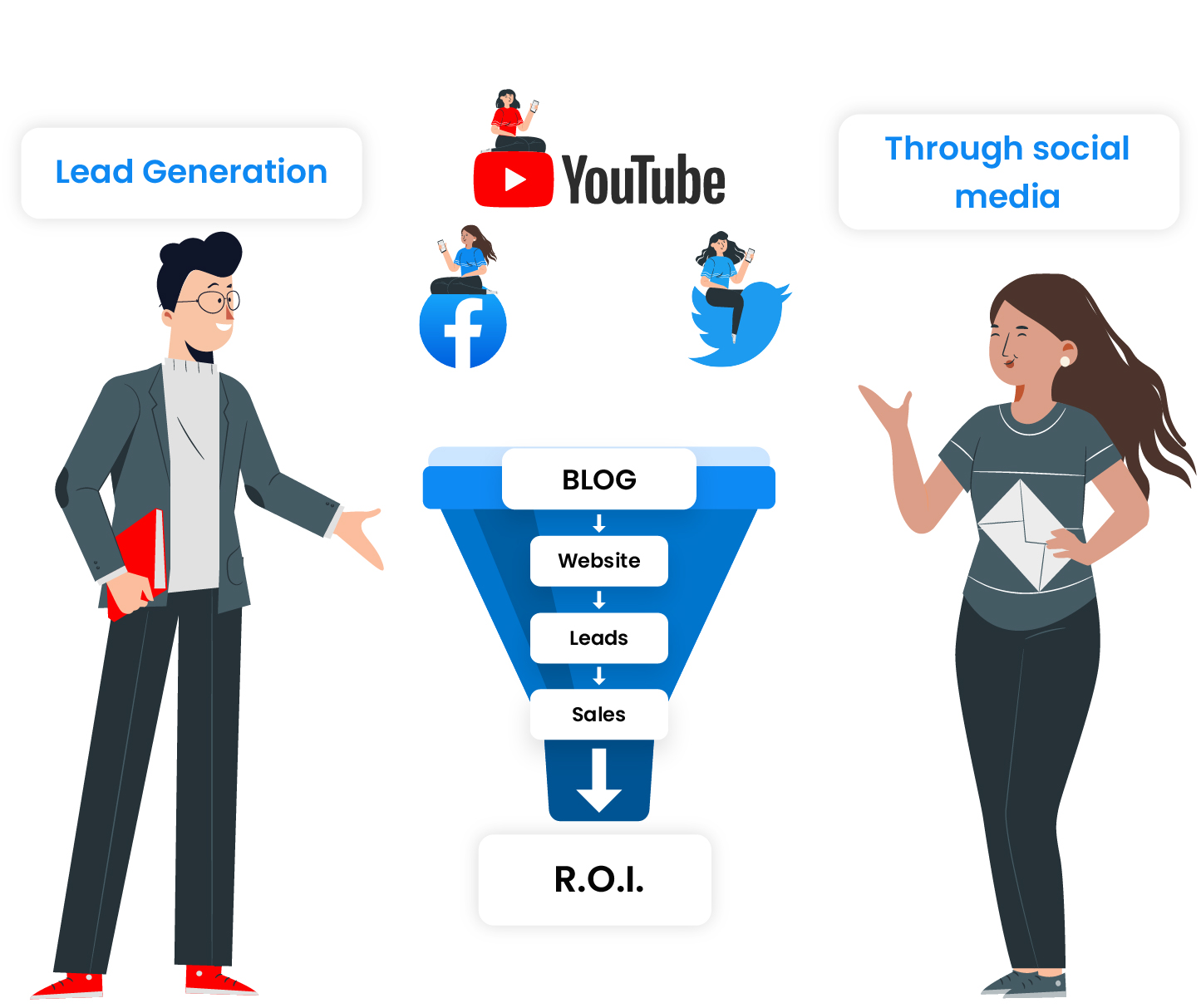
How to Find Trending Topics for Your Business Content Strategy
Discover proven methods to find trending topics using Google Trends, social media hashtags, and seasonal analysis. Learn how to identify popular content opportu...

Discover 11 expert tips to create engaging content for your business, from leveraging Google Trends and social media to using analytics tools, pop culture, and surveys. Transform your content strategy and boost audience engagement.
“Content marketing is really like a first date. If all you do is talk about yourself, there won’t be a second date”
David Beebe
Good content means providing high-quality information in engaging and entertaining ways to give your customers and clients what they need.
In fast-paced environments like tech, media, or lifestyle, the possibilities are endless. But what if your industry is something less exciting? If you’re a plumber, carpet cleaning company, or insurance salesman, it can be hard to generate content that captivates your audience.
To make it easier on you, we’ve compiled a list of 11 content ideation tips for your niche, so you can find topics that will lead to engagement and conversion.
Google Trends is a powerful marketing tool designed to help you increase your Google ranking. It can tell you the relative popularity of a keyword at any given time, as well as how popular it has been over a certain period. Relative in comparison with all possible queries (this is different from absolute search volume).
On top of that, it will give you predictions for the future. Then it’s up to you to spot trends. So how does this work?
Let’s say you run a landscaping business. You can use Google Trends to check for the keyword “grass clipper.” It’ll be higher in spring and summer months when your clients are cutting their grass regularly. That’s the kind of input you can use to plan seasonal content, months in advance.
You can also compare two or more topics, to see which one should be your focus. In the example below, we compared “grass clipper” with “grass cutter”, over a 12 month period.

But then what? What happens in the fall or winter months? That’s where your “related queries” really come in handy. Check out your related queries (and related topics) for “fall landscaping.” You’ll find plenty of new ideas in your keywords.
You’ll also be able to anticipate when your busiest time of year for content will be, and you’ll have time to fill in the content gaps.
It’s especially powerful if you can relate a trend to your products or services.
Carpet cleaning services, for instance, could hop on the “spring cleaning” trend around March. You could write an informational article around spring cleaning tips and allergies. And in winter? It’s an excellent time to talk about freshening up your home without a deep clean!

Lastly, if you want to find out which searches are trending right now and not limit yourself to a specific topic, you can use the Trending Searches feature. It will give you the most searched for topics, today, or any given time. Even real-time!

Watch your hashtags to see what’s buzzing. You should have already crafted a social media strategy that includes which platforms you’d like to be most active on, and who you’ll be targeting.
That’s how you know who to follow and identify the right hashtags to use.

Above all else, remember your social media should be a place for conversation. So jump in and start talking!
An example: You work for an insurance company. And you know there’s a local festival playing in your area. Festivals are fun. Insurance isn’t.
What about using the interest in the festival to create content? Writing a post about how to start a festival and the planning that goes into one, including permits and insurance. Then, you could post it under popular festival hashtags. Remember to do your homework and tag the festival organizers when you do, to generate more interest.
Cross engagement with other industries is another great way to generate content. Focusing on holidays or special occasions makes it easier to plan content in advance.
Good writers can constantly drum up new ideas. Adding a copywriter to your marketing team means you’ll always have high-quality content.
Not only do writers have a nose for interesting topics, and great attention to detail, they can ensure your work goes out without mistakes.
The best writers can tease multiple ideas and angles out of similar topics. That can help you maximize on your top content.
Hiring a writer doesn’t have to be expensive. There are plenty of freelance job posting sites online. You can get high-quality work at a great price. Put yourself out there, and look for freelance writers whose workflow and style will give you exactly what you need.
There’s more to content marketing than Google Analytics. Different analytics tools serve different functions and come with various features.
They’re all designed with one thing in mind: to analyze your digital marketing strategy, (and your competitors!) and to give you ideas for ways to improve. The specifics of what you need depends on you.
Here are some great examples:
All three of these tools can be used to optimize your SEO, and perform regular content audits. SEO, and keyword research in particular are critical for the success of your content.
You can choose what best suits your needs, or mix and match for the best effect. Not only can these tools give you the best ideas for new content, but you can compare across related keywords, and see how you stack up against competitors.

No matter how focused you are on your own content marketing, you should always pay attention to what’s going on in your industry.
Staying on top of new technology, new training techniques, and trends isn’t just good business practice to beat the competition. It’s also a great way to find new topics.
The right industry research means your content will shine with your expertise, building your reputation, and passing on needed information.
Let’s go back to our landscaping example. In quieter months, you may choose to review a product line launched by one of your suppliers. Or new ways to build a great backyard, following popular design trends.
Not only is this information valuable to your readers, but it also gives insights to your industry.
That reflects on expertise in your field. Subscribe to RSS feeds and newsletters of competitors and influencers in your niche, and nothing will slip by you.
Sometimes, if you sense your content is getting dull, it may just be a matter of perspective.
If you’ve been focused on list posts or how-tos, they can feel repetitive over time. Try something new.
If you own a roofing company, add posts about your personal projects. Use pictures to increase traffic. Or switch it up with a video. A short video is less of a time constraint for your readers.
Facebook has 1.65 billion monthly users and has become the top video platform. With video gaining increasing popularity across social media, mixing up your content marketing strategy with some video is a good idea.
If you’re not getting the social media traction you expected, a giveaway or freebie like an ebook can make the difference. If you’re an insurance company, it might be hard to make your website look or feel exciting. But a free ebook with information on what to ask an insurance adjuster, or how to compare insurance premiums is necessary information that could set your business apart as one who cares about its customers. Also, there are numerous landing page examples that can squeeze maximum out of your website.
Interactive content is another way to make your content more dynamic. Responsive charts, quizzes, or an interactive generator are fun and interesting for your customers and clients. They can also provide data on your readers, customers, and clients, which you can use to improve your content.
If you run an affiliate program, your affiliates will be happy to add these types of content to their marketing collateral.
We’ve touched a little on using seasonal and holiday events to schedule your content. Seasonal events are a great way to boost flagging content.
You already know when your business is at its busiest. You also know in advance when your biggest sales or biggest slumps are. Planning content around seasonal events is a great way to stay relevant.
Unlike pop culture trends, you aren’t relying on fickle popularity or that all-important viral content. Seasonal content means you can plan ahead as far as a year.
Pool cleaning will be more relevant in the summer than in winter. But protecting your above ground pools from damages during colder months is important to your customers. And having some fun daydreaming about poolside days in sub-zero temperatures is always relatable!
Take an example from mommy bloggers, the Queens of affiliate marketing: preparing ahead means huge ROI. They will start prepping for Christmas shoppers, at least 3 months in advance.

It can be harder to plan for pop culture topics. But they can still have a place in your publishing.
Tapping into your customers’ passions is a great way to earn their loyalty. Some are recurring or announced well in advance, so you can prepare.
Connecting your brand to a current trend can boost your visibility. If you’re a plumber, eco-friendly guides on how to install low-flow fixtures can appeal to current trends in green living.
Keep an eye on emerging trends in traditional media. Can you create a bridge between your office cleaning services and the latest Marvel movie? Or maybe your delivery drivers are sports fans. If it’s World Cup seasons, let your readers in on the office betting pool.
A great example of this is infographic tool Venngage’s article on managing styles, according to the Lion King. They bridged the release of the new Lion King movie with Human Resources. The content was targeted at HR professionals, as they will often use infographics for communicating guidelines and policies with employees.

Another great example of latching on to a pop culture trend is this Game of Thrones wedding guide by experience gift company Truly Experiences.. It was timed around the end of the last season of the show, as well as in the middle of wedding season. Instagram was teaming with hashtags like #GOTwedding and many couples were looking for wedding inspiration.

A perfect way to combine pop culture with seasonal trends, aimed at an important part of their market: engaged couples planning their wedding.
If you have any kind of content media presence, you probably already know about Google Analytics. Like the analytics tools we’ve previously mentioned, GA can help track your keywords and the popular trends on your website.
It also searches blogs, YouTube, and of course, Google’s own search terms.There are plenty of features to give you ideas for new content. GA can show you user behaviors of visitors, topics most often searched on your website and your most popular content. It can inform you which channel your website is most commonly found on, who your current demographic is, where they are geographically, or if they’re on a mobile device.
That doesn’t always lead to new ideas, but it’ll give an idea of topics that might interest your primary demographics and the tone and structure of your content.
To track content used by your affiliates, you can even integrate Post Affiliate Pro with Google Analytics .
It’s fairly easy to search out your own most popular content, with the tools we mentioned before. It’s trickier to figure out why those particular pieces worked so well, and how you can use that to create magic again. First, figure out what your top content is, and then reverse engineer.
What does this content offer your customers or clients? Is there another perspective? Can you expand on it? Checking your content’s comment section can help highlight gaps in previously successful pieces, and help you optimize existing pages while making use of new ideas.
That brings us to our last point. If you’re looking for ways to give your customers what they need, there’s no better way to do that than to ask. That could mean sending out regular surveys in your newsletters or reading comments on your website and social media.
Offering plenty of options to communicate with customers improves your rankings, and is sure to provide an endless well of inspiration to draw from.
Content marketing is vital to your business. But not every industry is Instagrammable. So how do you keep up a constant stream of content that is interesting, engaging, and can help communicate with your audience? Ask yourself these questions when crafting your content.
Once you’ve mastered that, using your analytical tools, the expertise of a good writer and your research into keywords and trends is sure to bring you a wealth of new ideas about content that can really serve your customers. And get you to the top of the rankings, too.
Use tools like Google Trends and social media hashtags to identify what’s currently popular in your industry. Analyze seasonal and pop culture trends to plan relevant and engaging content.
Switch up content formats, such as using videos, interactive elements, and giveaways. Regularly review analytics, engage with your audience via surveys, and try new angles or topics with the help of professional writers.
Above anything else, Elise loves playing with words. She spends her working hours guiding writers to run a successful freelance business, while occasionally blogging over at HireWriters. In her spare time, she dabbles in Warhammer and SUPPING. When no one is looking, she bakes a mean Tarte tatin and stuffs her face with soup-filled dumplings.
Unlock the full potential of your content marketing. Explore tools and expert strategies to create engaging content that drives conversions.
Discover proven methods to find trending topics using Google Trends, social media hashtags, and seasonal analysis. Learn how to identify popular content opportu...

Learn how to write engaging affiliate marketing content that ranks to draw your audience to your products/services.
Discover the essential factors that make affiliate marketing content rank well in search engines. Learn proven SEO strategies, content optimization techniques, ...
Cookie Consent
We use cookies to enhance your browsing experience and analyze our traffic. See our privacy policy.

